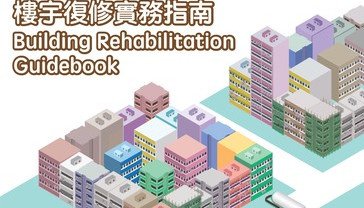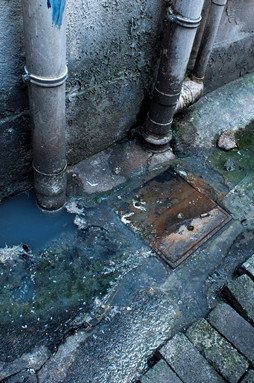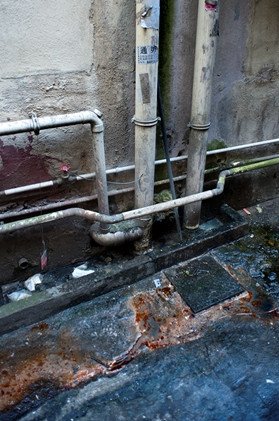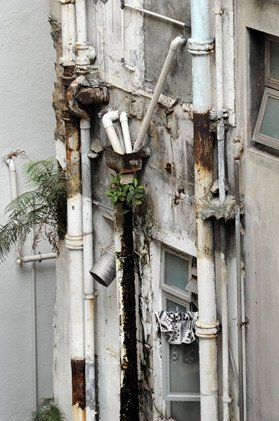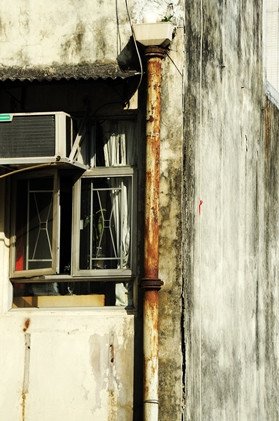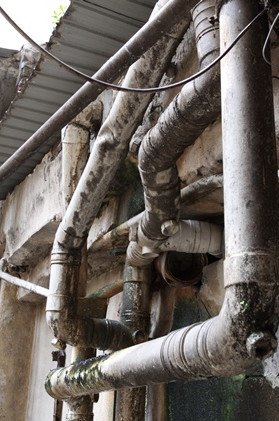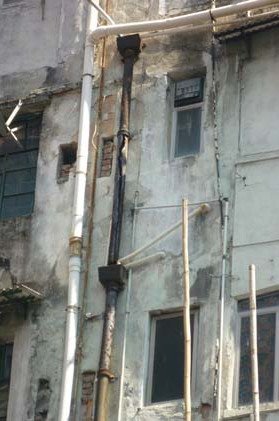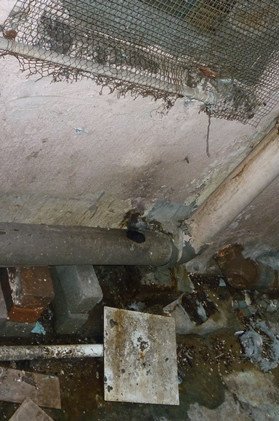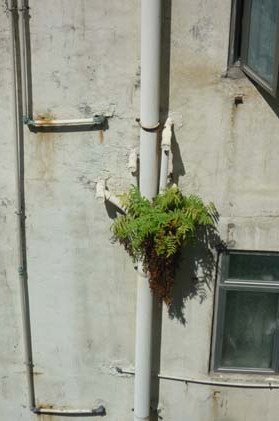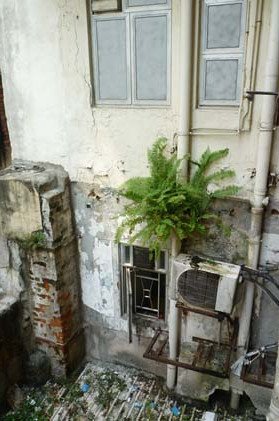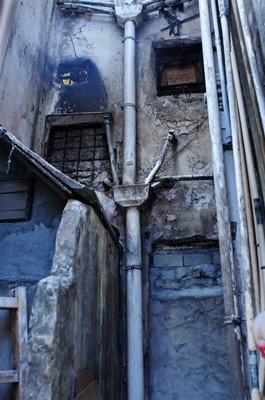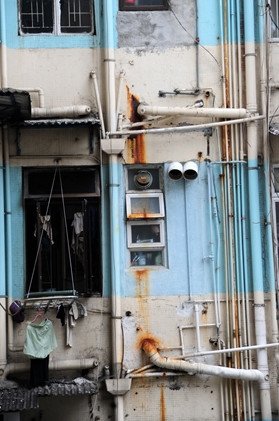Cause?
Inadequacy in design of drains (such as insufficient diameter of drains, bends too sharp); blockage of drains by rubbish/sand collected in the system especially in bends or traps; insufficient number or deterioration of brackets leading to breakage of supply pipes; blockage of open joints such as hoppers of down pipes by plants or rubbish; or unauthorized additions overloading the drainage system are the causes of broken pipes.
How to handle?
The defective section should be replaced and securely fixed onto the external walls or floors. For old buildings, building professional should be appointed to assess whether it would be more economical to replace all the common drains in the long run.
Legislation?
Buildings Ordinance (Chapter 123)- Buildings Department (BD)
- Drainage Repair Order (Section 28)
It requires building owners or owners' corporation of buildings which are found to bear defective or inadequate drainage installations, or the drainage system of which is causing nuisance, to investigate and repair or rectify the situation.
- MBIS Notices (Section 30B) (Mandatory Building Inspection Scheme)
It requires building owners or owners' corporation of buildings aged 30 years or above (except domestic buildings not exceeding 3 storeys) to appoint an Registered Inspector (RI) to carry out the prescribed inspection and supervise the prescribed repair works found necessary of the common parts, external walls and projections or signboards of the buildings.
Buildings Department produces a set of video themed "Learn More about Healthy Drains" (Chinese version only), for ease of public reference.
Section 3 of Water Pollution Control (Sewerage) Regulation (Cap 358AL)- Environmental Protection Department (EPD)
Smart Tips for Drainage Repair





